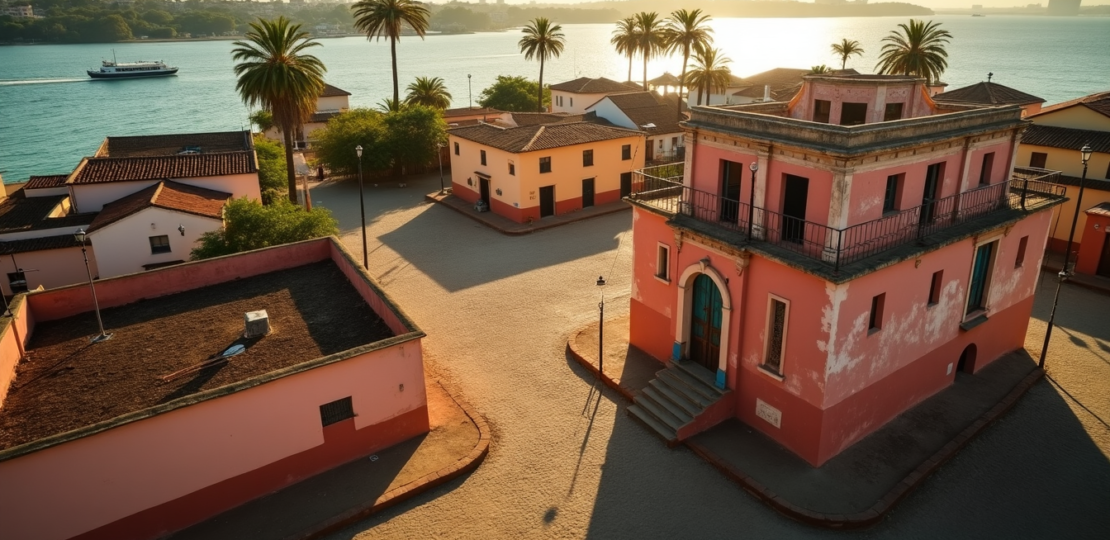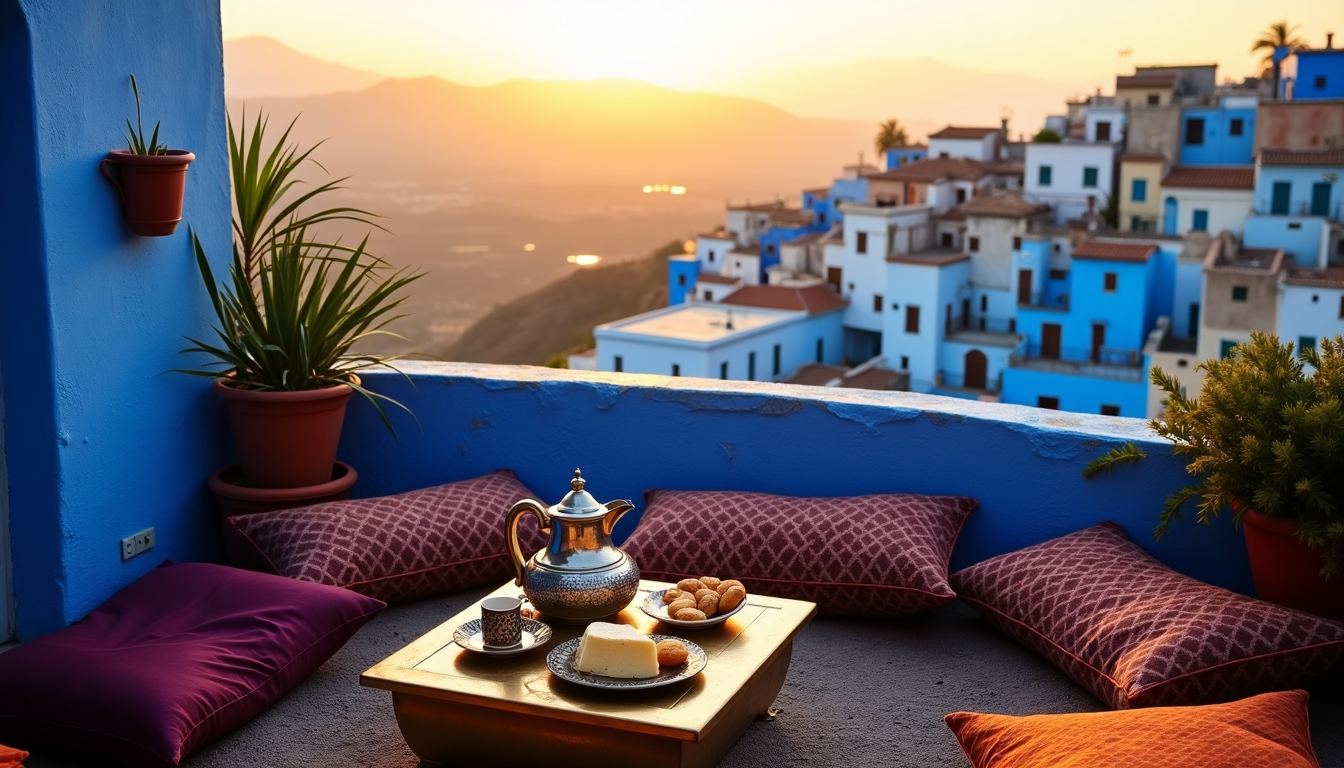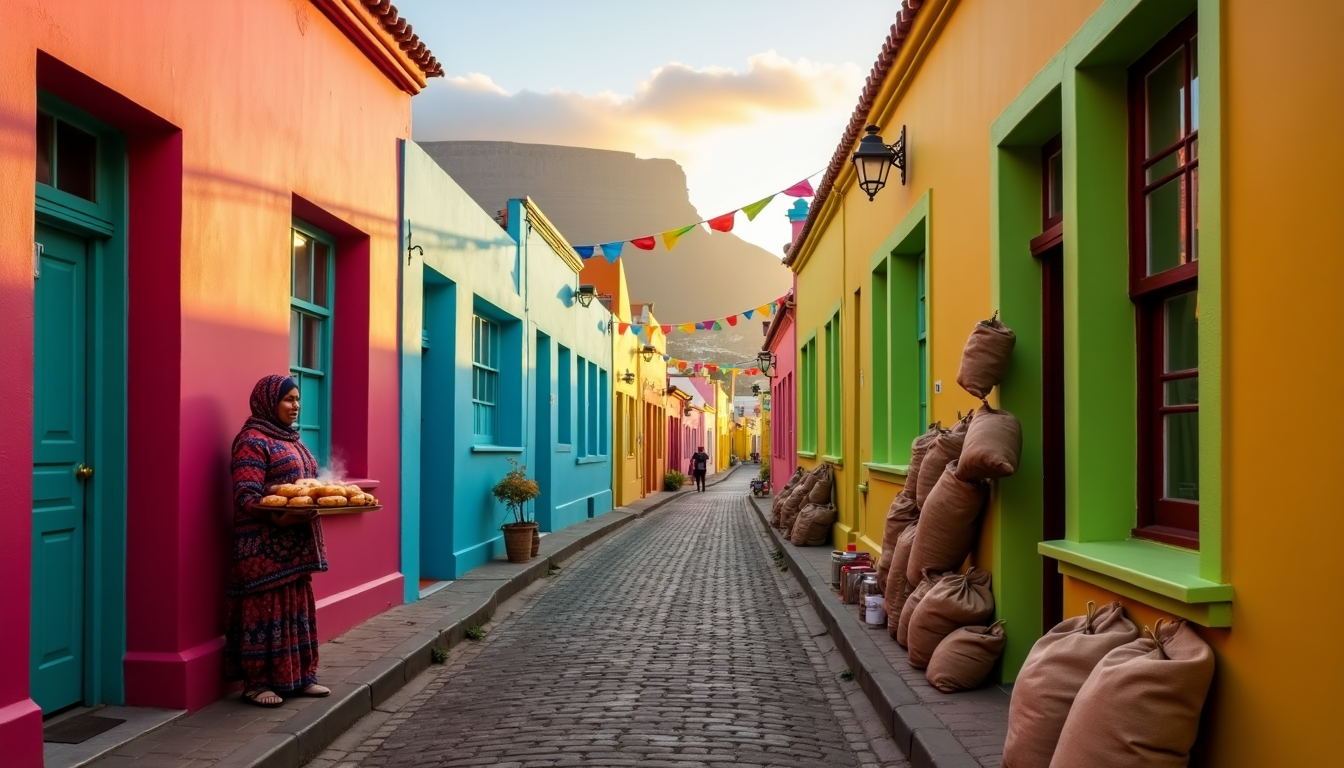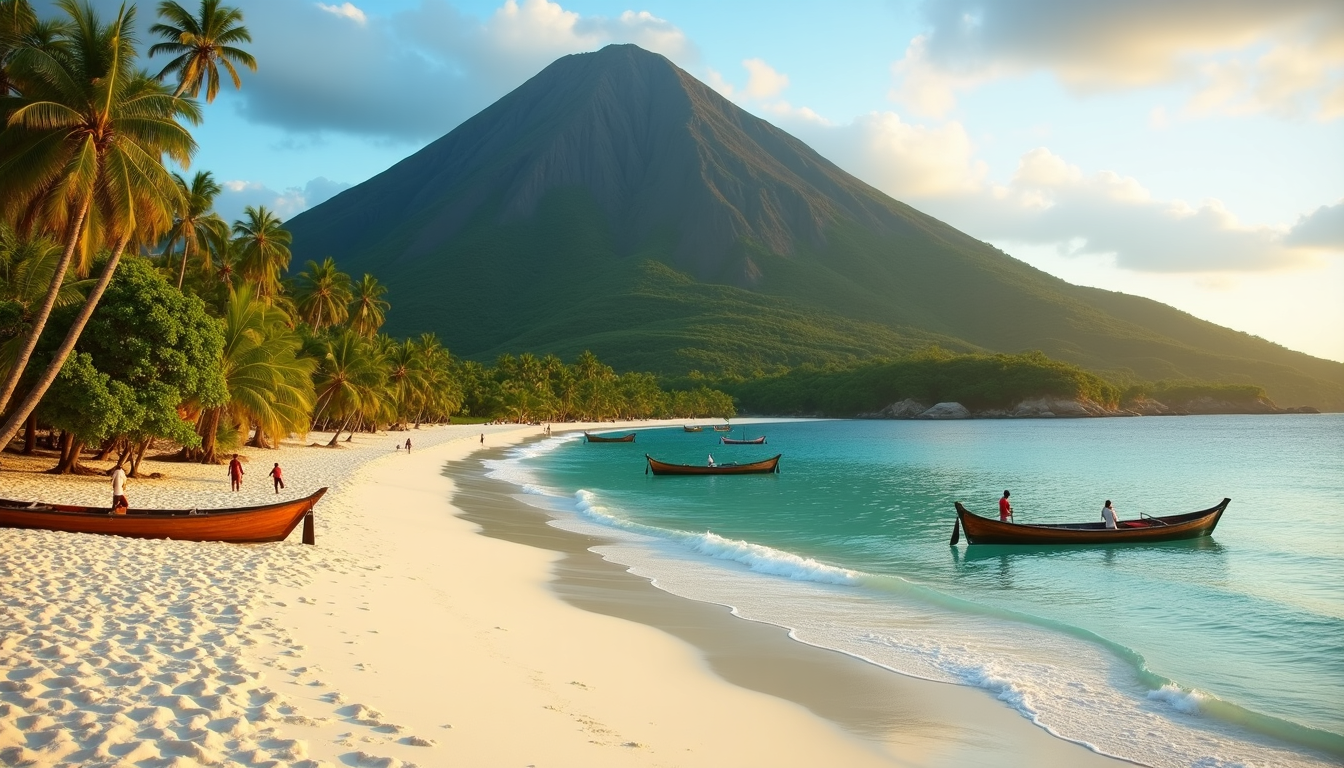11 Must-See Stops on Your Gorée Island Tour: A Historical Journey Through Senegal

Gorée Island serves as a haunting reminder of humanity’s darkest chapter. This former West African slave trading port witnessed millions of enslaved people passing through its chambers.
The island’s history runs deep despite its modest size of 28 hectares and current population of 1,800 residents. Portuguese colonizers first arrived in the mid-1400s, and the island became one of the most important centers of Atlantic slave trade from 1536 to 1848. Each corner of this UNESCO World Heritage site reveals stories of the past. The House of Slaves, which opened as a memorial in 1962, provides powerful evidence of this history and features the infamous “Door of No Return.”
Modern visitors can reach this car-free island by a quick 25-minute ferry ride from Dakar. The island’s present-day charm shines through its vibrant cultural scene, colorful architecture, and talented local artisans. Our carefully selected 11 must-see stops will help you explore centuries of history while experiencing the island’s contemporary culture.
House of Slaves (Maison des Esclaves)

Image Source: Sites of Conscience
Nicolas Pépin built the House of Slaves in 1776, and it now stands at the heart of our Gorée Island tour. This striking red building tells stories of human suffering and resilience from the peak of the Atlantic slave trade.
History of the House of Slaves
The wealthy Pépin family’s story weaves into the building’s early history, particularly through Anna Colas Pépin, a prominent colonial trader. The building became a holding center where enslaved Africans endured horrific conditions. Guards separated families by force, and kept men, women, and children in different quarters. Young girls faced additional trauma when traders displayed them in the courtyard.
Door of No Return Experience
The Door of No Return represents the final point where countless enslaved Africans saw their homeland for the last time. Today, this powerful symbol attracts 200,000 visitors annually. Many world leaders like Nelson Mandela, Pope John Paul II, and Barack Obama have stepped through this doorway. Each visitor forms a deep connection with this haunting space.
House of Slaves Museum Exhibits
The House of Slaves became a museum in 1962 and maintains significant elements of its original structure. The museum showcases:
- Original holding cells with shackles
- Historical artifacts from the slave trade era
- Preserved architecture that shows the contrast between slave quarters and traders’ elegant homes
The museum’s exhibits share personal stories of both the enslaved and their captors. These stories give visitors a detailed view of this dark chapter in human history. A recent revitalization project, finished in 2022, will give this vital historical site the ability to educate and move visitors from across the globe.
Historical Museum of Senegal

Image Source: Wikipedia
The Historical Museum of Senegal sits inside the historic Fort d’Estrees. This impressive building has 1,900 square meters of space with 793 square meters devoted to exhibitions. The museum belongs to the Institut fondamental d’Afrique noire and tells Senegal’s story from ancient times until independence.
Museum Collections and Artifacts
Visitors can explore 13 different rooms that bring Senegal’s past to life. The collection starts from the Stone Age and continues through independence. The museum holds about 500 pieces that showcase different themes. The sort of thing I love is the room featuring the Senegambian stone circles, which UNESCO recognizes as a World Heritage site.
Historical Significance
The fort’s transformation into a museum changed its original purpose completely. Workers built it between 1852 and 1856 to protect Dakar’s harbor, and after World War II, it became a prison. Belgian anthropologist Guy Thilmans started the renovation project. The work took more than ten years and got support from UNESCO, the Ford Foundation, and other organizations.
Guided Tour Experience
Visitors can take a circular route that makes exploring the museum exceptional. Tour guides welcome everyone at the ferry station and give explanations throughout the trip around the island. Each room shows a different part of Senegal’s past in a straightforward way. Detailed maps and cultural displays help visitors learn about Senegal’s heritage through this hands-on experience.
IFAN Historical Museum

Image Source: museeafrica.com
The IFAN Museum, 1936 old, is one of West Africa’s oldest art institutions. The institution became The Théodore Monod African Art Museum in 2007, named after the French naturalist who led its operations.
IFAN Museum Highlights
West Africa’s largest artifact collection lives within these walls. Today, the museum displays more than 9,000 objects that represent the region’s artistic legacy. Ancient musical instruments and traditional weapons help tell the story of West Africa’s cultural heritage. The museum’s collection brings to life the rich history of regional tribes through its displays.
Cultural Exhibitions
The museum’s galleries showcase an impressive collection of cultural treasures:
- Intricate tapestries and carvings from different regions
- Traditional masks and ceremonial artifacts
- Exhibits from Bassari country, a UNESCO World Heritage site
- Unique collections from Mali’s Dogon tribe
Visiting Information
The museum welcomes visitors daily from 10:30 AM to 4:30 PM. Guided tours help visitors understand each exhibit’s historical context. The core team gives detailed explanations about each artifact’s significance. The museum also hosts temporary exhibitions and cultural events that showcase Senegalese traditions. The building’s colonial-style architecture adds a special touch to the experience, making it an educational and visually striking destination.
Castle of Gorée

Image Source: Discover Senegal
The historic castle sits at Gorée Island’s highest point and stands as proof of centuries of colonial presence. Portuguese explorers built this fortress in the 15th century, and it became crucial to the island’s defense system.
Castle Architecture
Dutch and French modifications improved the castle’s original Portuguese design. Its thick walls and strategic location showcase typical military architecture from colonial times. The later addition of cannons and defensive structures made it an even stronger military fortress.
Historical Significance
This castle’s history weaves through Gorée’s colonial era. Portuguese traders arrived here in 1444, starting the first European settlement on Africa’s western shores. The Dutch seized control in 1621 and used the fortress to guard their trade routes. The French took over in 1677 and managed to keep control until Senegal gained independence in 1960.
Panoramic Views
Today, visitors can enjoy spectacular views of the island and Atlantic Ocean from the castle’s high position. The view includes:
- Colonial buildings with their vibrant colors below
- The Atlantic Ocean’s endless blue waters
- Dakar’s busy port on the horizon
- Historic sites scattered across the island
History lovers and photographers find the castle plateau, with its original fortifications, perfect for capturing amazing shots. A climb to the castle’s top has become a must-do activity on any Gorée Island visit, combining rich history with unforgettable views.
Little Beach (Plage de Gorée)

Image Source: Snorkeling Report
Little Beach (Plage de Gorée) sits right by the ferry dock and gives visitors a quiet break from exploring the island’s history. This small but charming sandy spot has become the island’s social center where tourists and locals come together to enjoy island life.
Beach Activities
The shoreline buzzes with things to do. You can rent chairs and umbrellas from the beach kiosk to spend a relaxing afternoon. The cove gives snorkeling fans a chance to see:
- Parrotfish and surgeonfish
- Zebra seabream and rainbow wrasse
- Black sea urchins and red sea anemones
Swimming Areas
Buoys mark a safe swimming zone for visitors. The western part of the cove has rocks and concrete blocks that create the best spots to explore underwater life. The water clarity changes throughout the year, but these waters are home to about 20 different fish species.
Local Life
Beach life here mixes tourism with genuine island culture naturally. Kids play on boogie boards while Senegalese families and tourists from around the world enjoy the sunshine. The Dakar-Gorée swimming competition happens once a year, bringing together more than 500 swimmers. Beachfront restaurants serve fresh seafood and traditional Senegalese dishes that help support local fishing families. This lively scene shows the daily rhythm of 1,800 residents who live in this car-free paradise.
Mariama Ba House

Image Source: UNESCO World Heritage Center
The Mariama Bâ School on Gorée Island stands as a symbol of educational excellence and women’s strength. Leopold Sedar Senghor, Senegal’s first president, established this prestigious institution in 1977, and it continues to shape young women’s future.
Historical Significance
The school’s establishment drew inspiration from Mariama Bâ’s legacy as an internationally renowned feminist and author. Bâ strongly supported women’s education and rights instead of accepting traditional roles. Her remarkable novel “So Long a Letter,” published in 1979, earned the first Noma Award for Publishing in Africa. The school bears her name to honor her commitment to advancing women’s education in Senegal.
Architecture
The school building remains one of Gorée’s notable landmarks despite facing coastal erosion challenges. Several preservation efforts protect the building’s enclosure in the island’s southern part from sea erosion. The institution quickly became synonymous with educational excellence after its establishment and prepares about 200 girls each year for their baccalaureate.
Cultural Impact
The school’s influence reaches far beyond academics. It ranks among Senegal’s most prestigious public schools and carries forward Bâ’s vision of education as a path to women’s liberation. The institution demonstrates Bâ’s belief through its rigorous academic programs that “books are a weapon, a peaceful weapon perhaps, but they are a weapon”. This educational center equips young women and encourages the spirit of emancipation that Bâ championed throughout her life.
William Ponty School

Image Source: Wikipedia
The William Ponty School, a 120-year-old institution founded in 1903, changed the educational map of French West Africa with its trailblazing teacher training program. The school started in Saint-Louis and moved to Gorée Island in 1913.
Educational Legacy
The school trained elite educators and administrators for French West Africa. Third-year students worked on research projects during summer holidays and wrote manuscripts about 28 different topics related to Black African socio-cultural aspects. W.E.B. Du Bois praised the curriculum in 1925 because it matched European educational standards while celebrating African cultural elements.
Colonial Architecture
A historic building from before 1800, once owned by Jean and Pierre Lafitte, became the school’s home. The school moved to Sébikotane, about 40 kilometers from Dakar, after 1938. The building stood proudly in the French government square and showed off the colonial era’s architectural style.
Historical Importance
The school’s biggest effect was its role in African independence. These notable alumni led independence movements:
- Félix Houphouët-Boigny of Côte d’Ivoire
- Modibo Keïta of Mali
- Hamani Diori of Niger
- Mamadou Dia of Senegal
The institution evolved from a symbol of colonial education to a catalyst for change. The school’s graduates became leaders who changed from colonial subjects to architects of independent African nations. Researchers worldwide still study the William Ponty School collection because it holds vital documentation of West African social and cultural history.
Maritime Museum

Image Source: Discover Senegal
The Maritime Museum has enriched Gorée Island’s cultural landscape since its inauguration in 1960. This remarkable institution showcases Senegal’s maritime heritage from its home in an 18th-century building.
Naval History Exhibits
A recent makeover has transformed the museum’s historical collections. The exhibits combine artifacts with interactive displays to highlight eight key themes:
- Marine ecosystem threats
- Mangrove preservation
- Manatee conservation
- Sea turtle habitats
- Ray and shark species
- African artisanal fishing
- Protected marine areas
- Théodore Monod’s bathyscaphe descent
Maritime Collections
The museum boasts an impressive collection of 6,000 marine species. Realistic frescos and reconstructions let visitors experience diverse marine ecosystems. The scientific team dedicates its efforts to sea turtle conservation and collects regional data about these remarkable creatures.
Visitor Information
The museum stands near the House of Slaves and attracts 12,000 visitors each year. Its renovation project has created 15 direct jobs and serves as a learning center for marine biodiversity. Strategic collaborations with local schools help promote awareness about endangered marine species. The museum’s impact reaches beyond its walls through outreach programs in nearby villages that promote marine ecosystem protection.
Place du Souvenir

Image Source: Me With My Suitcase
Place du Souvenir Africain became Senegal’s third major cultural project in 2009. This vibrant space stretches along Dakar’s West Corniche and celebrates African heritage and resistance.
Memorial Significance
Visitors can explore multimedia presentations of influential African personalities who shaped the continent’s history at Place du Souvenir. The complex features exhibitions that honor martyrs, activists, and symbols of African dignity. The Henriette Bathily Women’s Museum relocated from Gorée Island to this site and now showcases Senegalese women’s creativity and achievements.
Cultural Events
The venue serves multiple cultural purposes:
- Film and television production castings
- Cultural festivals and art exhibitions
- Traditional Senegalese dining experiences
- Women’s Film Festival screenings
Photo Opportunities
The plaza sits next to the Atlantic Ocean and provides stunning backdrops for photography lovers. Photographers can capture breathtaking waterfront views from this strategic spot, which features beautiful surrounding greenery. The changing daylight creates ideal conditions to photograph striking sculptures and monuments that reflect African struggles and triumphs. The grand memorial stands as a powerful photography subject and honors those who fought for African independence.
Artisans Market

Image Source: Goshen College
The Artisans Market winds through cobblestone pathways with its vibrant displays of local creativity. This bustling marketplace showcases handcrafted treasures that reflect Senegal’s rich cultural heritage.
Local Crafts
The market boasts a vast collection of authentic Senegalese artistry. Handcrafted items range from intricate textiles to stunning jewelry and beautifully designed artwork. The market’s pride lies in items that tell tales of cultural traditions, and local artisans often work on-site to show their craftsmanship. Beyond traditional handicrafts, you’ll find unique collections of wooden masks, wrestling masks, and black coral jewelry.
Shopping Experience
The market buzzes with energy as friendly vendors share stories behind their creations. The atmosphere feels less overwhelming than other regional markets, though some traders can be persistent. You’ll get the best selection of items during early morning visits. Historic repurposed buildings line the cobblestone pathways that create an enchanted display of art.
Haggling Tips
A good grasp of local customs helps you negotiate better prices at the market. Here are great strategies to get fair deals:
- Start your offers at one-quarter of the asking price since vendors usually begin at double the local rate
- Use simple Wolof phrases like “Woñiko” (lower the price) and “le Prix da fa bari” (the price is a lot)
- Keep small bills separate and try saying “this is all I have”
- Stay friendly but firm during negotiations
The core team is happy to help visitors find special gifts or personal keepsakes that carry meaningful significance. This vibrant marketplace gives an authentic glimpse into Senegalese creativity, whether you want traditional crafts or contemporary art pieces.
Saint Charles Borromée Church

Image Source: Tripadvisor
Saint Charles Borromée Church stands majestically on rue du Chevalier de Boufflers, right in the spiritual center of Gorée Island. This sacred place honors Italian Cardinal Charles Borromeo and serves as one of just two churches on the island.
Religious Architecture
The church shows off its beautiful colonial-era features with square columns that look out over a peaceful plaza. The interior holds stunning old crystal chandeliers, a unique clam shell, and a marble altar. A spiral staircase in the grandstand, built in French Navy workshops, combines an iron ramp with wooden steps.
Historical Background
The church’s past begins with a dark moment when soldiers burned down the original building on Christmas night in 1799. The island’s Catholic community then gathered in Anna Colas Pépin’s home until they built their new church. They started building on April 11, 1828, which matched King Charles X’s feast day. The Signares of Gorée provided money for the building, which they finished in 1830.
Visiting Hours
The church plays an active part in island life today and celebrates its patron saint every November 4th or the Sunday after. Visitors can see a framed letter from Pope John Paul II that expresses his sorrow for Africa’s lost freedom. A mosque sits on the western slope next to the church, showing Gorée’s rich religious heritage.
Comparison Table
| Location | Year Established | Key Features | Notable Collections/Exhibits | Historical Significance | Visitor Information |
|---|---|---|---|---|---|
| House of Slaves | 247 years old | Red building with Door of No Return | Original holding cells, historical artifacts, preserved architecture | Former slave trading center | 200,000 visitors annually |
| Historical Museum of Senegal | 167 years old | Located in Fort d’Estrees, 1,900 sq meters total area | 13 distinct rooms, 500 pieces | Former prison post-WWII | Guided circular route accessible |
| IFAN Historical Museum | 87 years old | West Africa’s oldest art institution | 9,000+ objects, masks, ceremonial artifacts | Renamed to Théodore Monod African Art Museum in 2007 | Open 10:30 AM to 4:30 PM daily |
| Castle of Gorée | 578 years old | Portuguese fortress, raised position | Original fortifications | Portuguese (1444), Dutch (1621), French (1677) control | Panoramic viewpoint accessible |
| Little Beach | Not mentioned | Social hub, swimming area | 20 different fish species | Not mentioned | Chairs and umbrellas for rent |
| Mariama Ba House | 46 years old | Educational institution | Not mentioned | Named after feminist author Mariama Bâ | Serves 200 girls annually |
| William Ponty School | 120 years old | Teacher training institution | 28 different research topics | Trained future African leaders | Relocated multiple times |
| Maritime Museum | 63 years old | 18th-century building | 6,000 marine species, 8 distinct themes | Not mentioned | 12,000 visitors annually |
| Place du Souvenir | 14 years old | Cultural complex | Multimedia presentations, exhibitions | Houses Women’s Museum | Regular cultural events |
| Artisans Market | Not mentioned | Local craft marketplace | Textiles, jewelry, wooden masks, black coral | Not mentioned | Best visited early morning |
| Saint Charles Borromée Church | 193 years old | Colonial architecture | Crystal chandeliers, marble altar, spiral staircase | Original structure burned in 1799 | Annual celebration on November 4th |
Conclusion
Without doubt, our experience through Gorée Island reveals more than historical landmarks and uncovers a profound story of human resilience and cultural change. These 11 preserved sites showcase the island’s rise into a vibrant cultural heritage destination, rather than focusing only on its dark past as a slave trade port.
The House of Slaves stands as the most powerful reminder of the island’s history. Each location adds depth to Gorée’s story – from the Maritime Museum’s 6,000 marine species to the vibrant Artisans Market. The island’s educational legacy continues through institutions like the Mariama Ba House and William Ponty School. Religious harmony thrives between Saint Charles Borromée Church and the local mosque.
The cobblestone streets of this 28-hectare island tell a story of transformation from unimaginable suffering to a sanctuary of remembrance, education, and artistic expression. The well-preserved historical sites and the warmth of its 1,800 residents make Gorée Island a crucial destination to understand West Africa’s complex heritage.
RELATED POSTS
View all


